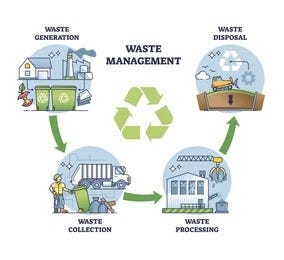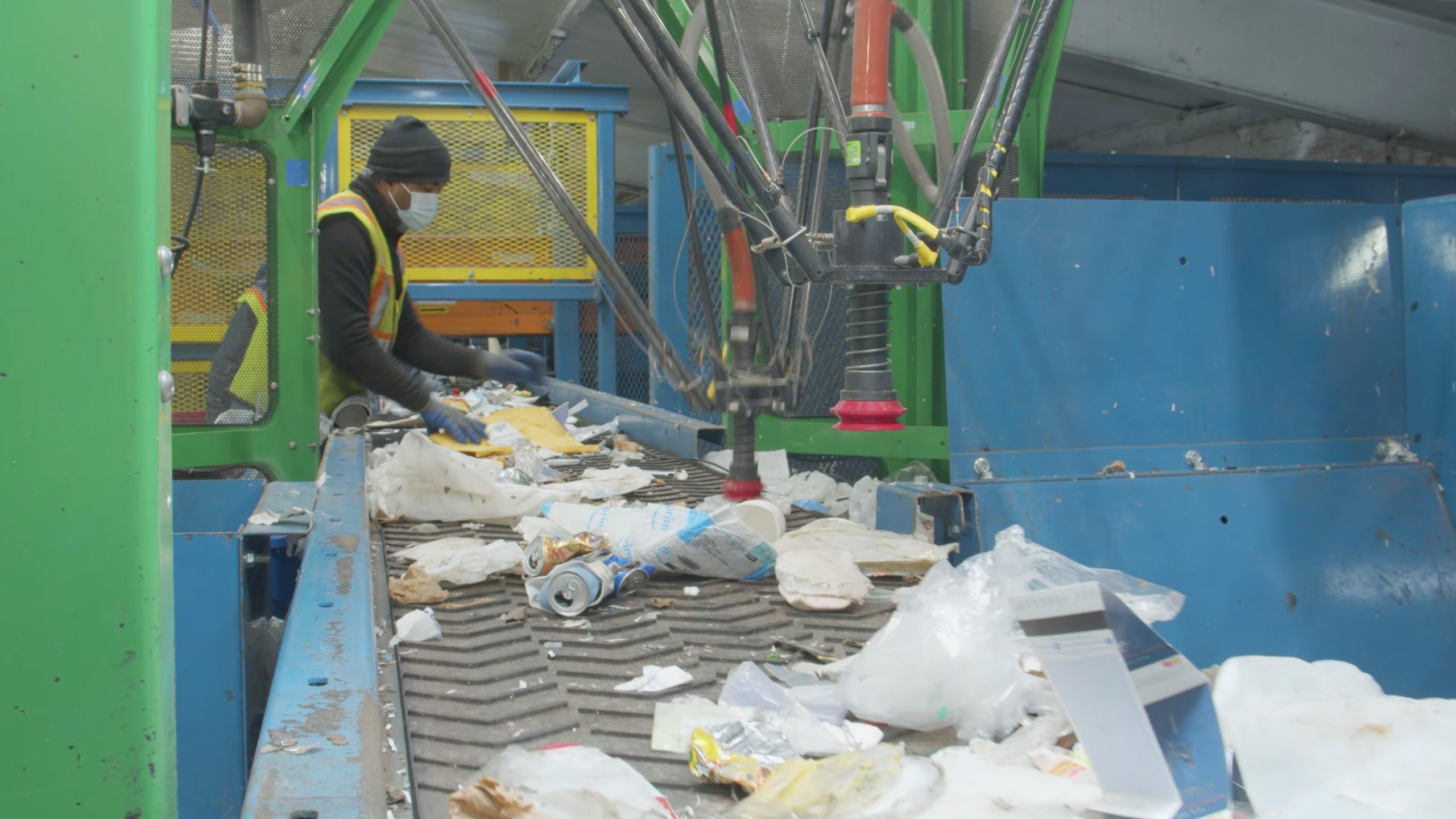How Recycling Lives Services Help Reduce Environmental Footprints
How Recycling Lives Services Help Reduce Environmental Footprints
Blog Article
Discovering Various Kinds of Waste in Modern Waste Monitoring Solution
The modern landscape of waste management includes navigating a complicated selection of waste types, each requiring specialized handling and disposal techniques to minimize environmental impacts. Municipal strong waste, harmful waste, electronic waste, and organic waste each existing distinct challenges and possibilities for resource recovery.
Municipal Strong Waste
Local solid waste, typically referred to as household garbage or waste, incorporates a selection of thrown out products generated by household, business, and institutional resources within a community. This waste stream usually consists of items such as product packaging, food scraps, backyard trimmings, paper, plastics, textiles, and discarded house products. The monitoring of local strong waste is an essential component of city planning and public health and wellness, necessitating effective collection, transport, and disposal systems.
Efficient waste monitoring systems are developed to decrease environmental impact while optimizing resource healing. This usually includes a mix of techniques consisting of recycling, composting, and landfilling. Recycling programs target products like paper, glass, metals, and particular plastics, diverting them from landfills and reintroducing them into the manufacturing cycle. Composting natural waste, such as food scraps and backyard trimmings, not only decreases land fill use but also creates beneficial soil amendments.
Communities must additionally deal with the logistical and financial obstacles related to waste management. Implementing pay-as-you-throw systems, boosting public understanding, and investing in technology can considerably boost waste diversion rates. By integrating these methods, municipalities can foster lasting areas, lower greenhouse gas exhausts, and save natural resources.
Hazardous Waste

Efficient contaminated materials monitoring involves numerous vital steps: recognition, disposal, treatment, and segregation. Identification involves the classification of waste based on its hazardous homes. Partition makes certain that harmful products are saved separately from non-hazardous waste to stop cross-contamination. Treatment methods, such as chemical neutralization, incineration, and stabilization, are employed to decrease the toxicity, volume, or flexibility of the waste. Finally, disposal choices, including safe land fills and underground storage, are chosen to make sure lasting containment.
Regulatory structures, such as the Source Conservation and Healing Act (RCRA) in the USA, supply guidelines and requirements for contaminated materials administration. Adherence to these policies, coupled with developments in waste treatment technologies, is crucial in minimizing the threats connected with harmful waste.
Electronic Waste
Digital waste, generally described as e-waste, represents a rapidly expanding obstacle in waste monitoring systems worldwide. This kind of waste incorporates discarded electronic devices and equipment such as smartphones, computers, tvs, and various other electronic home appliances. The quick speed of technological advancement, paired with reducing item life expectancies and customer demand for the newest tools, has greatly boosted the quantity of e-waste produced every year.
E-waste is especially bothersome due to its complicated composition, frequently consisting of hazardous substances like mercury, lead, and cadmium, which position considerable ecological and wellness dangers if not effectively taken care of. Alternatively, e-waste likewise contains useful products such as silver, gold, and copper, which can be recouped and reused. The twin nature of e-waste-- both useful and unsafe-- necessitates specialized handling, recycling, and disposal procedures.
Reliable e-waste monitoring involves strict regulative structures, durable collection systems, and advanced recycling technologies. Public awareness and participation are important, as incorrect disposal methods, such as prohibited dumping and casual recycling, exacerbate ecological contamination and carcinogen. Improving e-waste administration methods is important for mitigating ecological influence and recovering beneficial sources in a progressively digital globe.

Organic Waste
Organic waste, consisting of cooking area scraps, yard trimmings, and agricultural residues, represents a substantial section of the worldwide waste stream. Bonuses This kind of waste is eco-friendly, indicating it can be damaged down by bacteria right into simpler organic substances. Despite its capacity for all-natural decomposition, incorrect management of organic waste can cause adverse environmental influences, including the discharge of greenhouse gases such as methane, which add to climate modification.
Reliable management of organic waste is critical for minimizing these environmental influences (recycling lives services). Composting is an extensively adopted technique, changing natural waste right into nutrient-rich compost that can improve dirt health and agricultural efficiency. In addition, anaerobic food digestion is an emerging technology that transforms natural waste into biogas, a renewable resource source, and digestate, which can be utilized as plant food
Municipalities and waste monitoring entities should apply robust organic waste collection and treatment programs to make best use of the benefits of these processes. Public education projects can likewise play a crucial duty in motivating houses and organizations to separate organic waste from other types of waste. By prioritizing the management of organic waste, societies can reduce landfill usage, reduced greenhouse gas exhausts, and develop beneficial results for agricultural usage.

Innovative Waste Management
In the world of waste administration, ingenious approaches are changing just how cultures manage their refuse, aiming for sustainability and effectiveness. These improvements incorporate a variety of modern technologies and practices that enhance recycling prices, reduce landfill dependency, and reduced ecological influence. One noticeable innovation is the look at these guys implementation of smart waste containers equipped with sensing units that check fill degrees and enhance collection paths. This not only decreases fuel consumption however likewise reduces greenhouse gas discharges.
Another remarkable growth is the fostering of waste-to-energy (WtE) innovations. By converting non-recyclable waste into functional power through procedures such as incineration and anaerobic food digestion, WtE decreases landfill worry and supplies a sustainable power resource. Improvements in chemical reusing permit for the breakdown of complicated plastics into their original monomers, making it possible for the development of brand-new, premium plastic products.
In addition, the circular economic situation model is getting grip, highlighting the layout of products and systems that prioritize reusability and source effectiveness. This all natural method urges industries to lessen waste generation from the outset. With these cutting-edge strategies, contemporary waste monitoring systems are not only resolving the immediate obstacles of garbage disposal however additionally paving the way for a much more lasting future.
Verdict
A detailed understanding of metropolitan strong waste, contaminated materials, electronic waste, and natural waste, paired with the execution of innovative waste administration options, is important for alleviating ecological influences. Incorporating technologies such as smart waste bins and waste-to-energy systems can improve effectiveness and sustainability. Reliable waste monitoring approaches not just foster resource recovery however likewise advertise public recognition and participation, ultimately adding to the growth of a circular economy.
The contemporary landscape of waste management involves browsing an intricate selection of waste kinds, each calling for specialized handling and disposal techniques to alleviate ecological effects. Metropolitan strong waste, unsafe waste, digital waste, and natural waste each present unique challenges and opportunities for resource recovery.Digital waste, typically referred to as e-waste, represents a swiftly expanding difficulty in waste administration systems around the world. With these cutting-edge read more strategies, modern waste administration systems are not just dealing with the prompt challenges of waste disposal however also paving the method for an extra sustainable future.
An extensive understanding of municipal strong waste, harmful waste, electronic waste, and natural waste, coupled with the execution of ingenious waste management remedies, is essential for mitigating ecological impacts. (recycling lives services)
Report this page